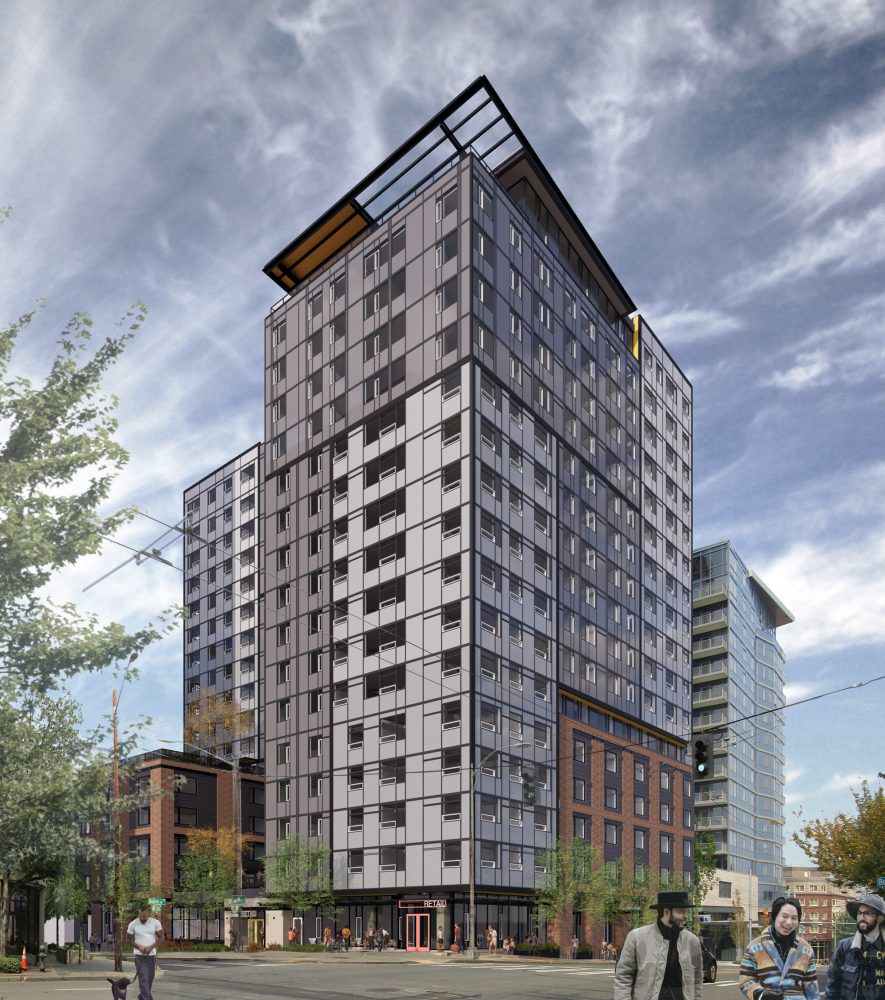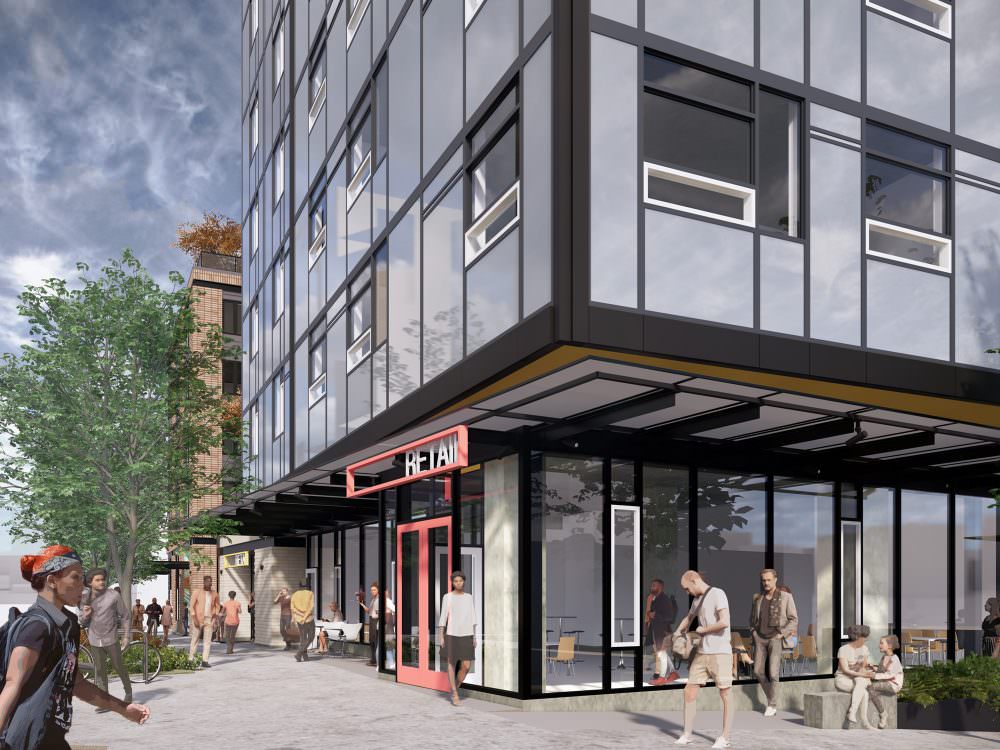
A hodgepodge of past-their-prime commercial properties will soon transform into one of Seattle’s first high-rise affordable housing developments at 1400 Madison Street. Bellwether, Plymouth Housing and Weber Thompson are answering the call from community stakeholders by creating new housing that serves a triple purpose: to house formerly homeless seniors and workforce housing families, to implement passive house principles at scale, and to make it all affordable. Here’s a look at three of the project’s most innovative sustainable features.

Street level view of Madison & Boylston
Project Stats
- 115 Plymouth housing units and 256 Bellwether housing units
- 5,000 sq ft of retail, shops, and 1,00 sq. ft. + community room open for use to the First Hill community
- Slated for a completion in 2022
1. Connected communities
Communities that don’t take care of their most vulnerable members miss out on vibrant opportunities for connection. Seattle’s First Hill neighborhood is about to get a big boost on this front. 115 units operated by Plymouth Housing are designed for formerly homeless seniors, giving them a place to live, socialize, and thrive. The remaining 256 units, operated by Bellwether Housing, are earmarked as affordable housing for those making 40% to 60% of the area median income. And housing is just the beginning. Gathering places in this community are in high demand, so Madison & Boylston will activate the ground level with 5,000 square feet of cafes and local businesses, replacing the “quick serve” pace of the working neighborhood with places that invite people to stay a while.
2. Long term paybacks from high performance design
As the first affordable high rise in Seattle in over 50 years, Madison & Boylston has a lot to prove. The project – adjacent to an anticipated Madison BRT (Bus Rapid Transit), the Broadway streetcar, and the Link Light Rail — will be a model for transit-oriented development, with triple-bottom line approach that others can learn from. Bellwether Housing and Plymouth Housing units are undergoing a High-rise Optimal Performance Study (HOPS) to examine systems within the building vis a vis lifecycle cost analysis. In the near term, the Plymouth business model includes revenue from the retail spaces to directly fund operations of the housing units and common spaces.
3. Health happens everywhere
The health of a person and the built environment are closely linked. In order to create the healthiest building possible, our design team has looked to Passive House principles to guide the design. The design team is also using the University of Washington CID Partnership Initiative’s Rosetta Stone to translate the science-based human health benefits of design features to their impact to quality of life. A high-performance building envelope and controlled fresh air throughout means that occupants are breathing clean air and are safe from harmful particulates that tend to concentrate at three and a half feet above the floor; in other words, the height of children and wheelchair users. Daylighting also plays a central role in the design of Boylston & Madison, as research links sunlight exposure to enhanced mental health. Planting beds offer seniors and youth an opportunity to nurture the growth of plants, which contributes to a Biophilic (literally “love of nature”) Design strategy. This offers overall increased mental health, and enhances self-esteem in youths empowered through learning about their effect on nature, and vice versa.